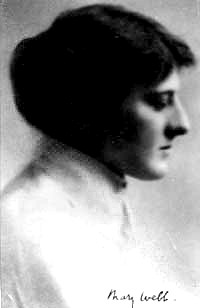|
Eaton Constantine
Eaton Constantine is a small village and former civil parish, now in the parish of Leighton and Eaton Constantine, in Shropshire, England. It is located just off the B4380 road, between Atcham and Buildwas, near The Wrekin hill. In 1931 the parish had a population of 200. On 1 April 1934 the parish was abolished and merged with Leighton. Near Eaton Constantine are the remains of a Roman vexillation fortress and three marching camps near a bend in the River Severn. The fortress lies in open farmland on a low south-eastward projecting spur between Ranslett House and Eye Farm. It was defended by a triple-ditch system measuring about 920 x 1,050 feet (c.280 x 320m) within the defences, which enclosed an area of just under 22¼ acres (c.9ha). This substantial defensive system indicates that this was no ordinary marching encampment, and its size would have been sufficient to house a substantial force of around 2,500 Roman legionaries and auxiliary soldiers. The fortress was probably ... [...More Info...] [...Related Items...] OR: [Wikipedia] [Google] [Baidu] [Amazon] |
Leighton And Eaton Constantine
Leighton and Eaton Constantine is a civil parish in Shropshire, England. It consists of the village of Leighton, together with the smaller villages or hamlets of Eaton Constantine, Upper Longwood and Garmston. The parish, which had a population of 420 at the 2001 census,Leighton and Eaton Constantine CP ONS 467 at the 2011 Census, rising from just 206 in 1911, /ref> is around six miles southwest of Telford and 26 miles from Birmingham. Leighton The village is situated along the River Severn, on the Shrewsbury and Worcester, England, Worces ...[...More Info...] [...Related Items...] OR: [Wikipedia] [Google] [Baidu] [Amazon] |
Legio XIV Gemina
Legio XIV Gemina ("The Twinned Fourteenth Legion") was a legion of the Imperial Roman army, levied by Julius Caesar in 57 BC. The cognomen ''Gemina'' (Twinned) was added when the legion was combined with another understrengthed legion after the Battle of Actium. The cognomen ''Martia Victrix'' (martial and victorious) was added following their service in the Pannonian War and the defeat of Boudicca in AD 61. The emblem of the legion was the Capricorn, as with many of the legions levied by Caesar.L. J. F. Keppie, ''Legions and Veterans: Roman Army Papers 1971–2000'', page 128. History Under Caesar Legio XIV was first raised by Caesar in Cisalpine Gaul during his raids into, and conquest of, Gaul. Their enlistment term was for 16 years, as per the other Republican legions (though Augustus raised that to 20). In the first years, the legion frequently was left behind to guard the camp during battles and raids. Following its early destruction at Atuatuca (near today's Tongeren, ... [...More Info...] [...Related Items...] OR: [Wikipedia] [Google] [Baidu] [Amazon] |
Villages In Shropshire
A village is a human settlement or community, larger than a hamlet but smaller than a town with a population typically ranging from a few hundred to a few thousand. Although villages are often located in rural areas, the term urban village is also applied to certain urban neighborhoods. Villages are normally permanent, with fixed dwellings; however, transient villages can occur. Further, the dwellings of a village are fairly close to one another, not scattered broadly over the landscape, as a dispersed settlement. In the past, villages were a usual form of community for societies that practice subsistence agriculture and also for some non-agricultural societies. In Great Britain, a hamlet earned the right to be called a village when it built a church.-4; we might wonder whether there's a point at which it's appropriate to talk of the beginnings of French, that is, when it wa ... ''village'', from Latin ''villāticus'', ultimately from Latin ''villa'' (English ''villa''). Ce ... [...More Info...] [...Related Items...] OR: [Wikipedia] [Google] [Baidu] [Amazon] |
Listed Buildings In Leighton And Eaton Constantine
Leighton and Eaton Constantine is a civil parish in Shropshire, England. It contains 37 Listed building#England and Wales, listed buildings that are recorded in the National Heritage List for England. Of these, two are at Grade II*, the middle of the three grades, and the others are at Grade II, the lowest grade. The parish contains the villages of Leighton, Eaton Constantine, and Garmston, and the surrounding countryside. Most of the listed buildings are houses, cottages and farmhouses, a high proportion of which are timber framed. The other listed buildings include two churches, one of which has listed memorials in the churchyard, a English country house, country house and associated structures, a milestone, and five cast iron pumps. __NOTOC__ Key Buildings References Citations Sources * * * * * * * * * * * * * * * * * * * * * * * * * * * * * * * * * * * * * * * {{DEFAULTSORT:Leighton and Eaton Constantine Lists of buildings and structures in Shrops ... [...More Info...] [...Related Items...] OR: [Wikipedia] [Google] [Baidu] [Amazon] |


